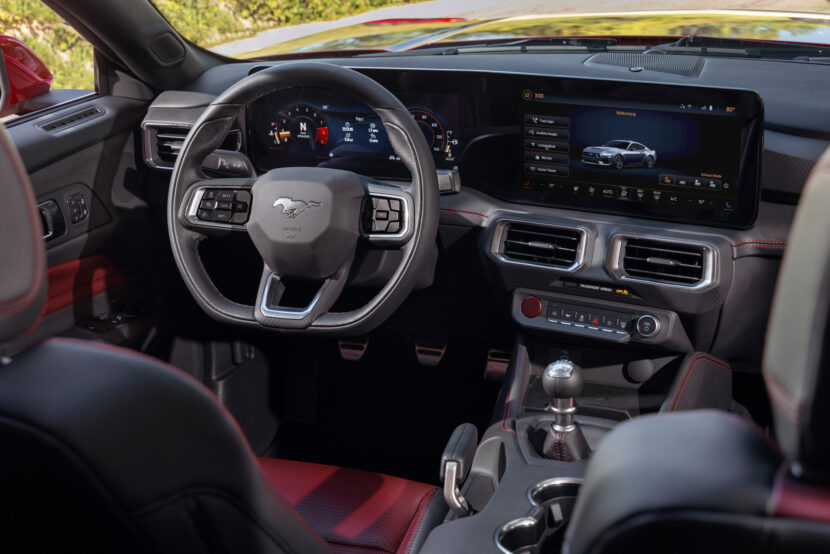Ford Mustang Darkish Horse vs BMW M4 Competitors: Design and Spec Comparability
Last night, Ford unveiled its seventh-generation Mustang, the final internal combustion-powered Mustang in history. One of the bigger announcements during the Mustang reveal was the addition of the Mustang Dark Horse model, which will be the most high-performance non-Shelby version of the Mustang. And since Mustangs are always interesting and exciting budget alternatives to cars like the BMW M4, we figured we’d compare the specs and design of the two.
First, let’s talk design. The new Mustang’s design is technically all-new, with the new car sharing almost nothing with its predecessor. However, it does look very similar. Think of it as an evolutionary update, rather than a revolutionary one. The front end does look better but the back end looks oddly small for some reason. Its pinched rear design isn’t bad looking in isolation but it just seems disproportionately small compared to the rest of the body. It also has too tall fenders for its wheels.
Although, those are minor gripes. Even with those gripes, the Mustang is the better looking car. Most of the BMW M4 is good looking but even the good bits are sort of just OK. Where the Mustang works, it’s quite pretty. Its highs are much higher than those of the M4 and its lows aren’t nearly as low.
Inside, neither car is particularly good looking, although the M4 does look sportier. The Mustang looks fine inside but its wall of screens is a bit too tall and looks a bit cheap. It’s a step down from the previous Mustang’s design, in my humble opinion. However, Ford did something absolutely awesome with the Mustang and it’s something that every car company with digital gauges should do. You can digitally switch the graphics of the gauges to mimic the analog gauges of the Fox-body Mustang from the ’80s. Even the backlighting changes to green at night, just like in the old Mustang. That’s an awesome touch and one that every automaker should do. BMW’s digital gauges are to put it kindly, sorta crap. But imagine being able to get BMW’s perfectly simple old-school orange analog gauges as graphical updates? Or even the gorgeous 3.0 CSL gauges? That’d be awesome.

Now let’s talk performance, the good stuff. We all know the BMW M4 Competition’s recipe by now: S58 3.0-liter twin-turbocharged I6 engine, 503 horsepower, 479 lb-ft of torque, eight-speed automatic, and rear or all-wheel drive. The Mustang is a bit different.
Under the hood is the latest iteration of the 5.0-liter naturally aspirated Coyote V8. Ford didn’t release any exact figures for the Dark Horse model but claims around 500 horsepower. It will be paired with a six-speed Tremec manual as standard, with a ten-speed auto as an option. Rear-wheel drive, with a limited-slip rear diff, is the only option.

The Mustang Dark Horse will be a formidable opponent on track, too. According to Ford, the Dark Horse is the most track-focused non-Shelby Mustang ever made, with magnetic dampers, stiffer springs, beefed up aerodynamics, six-piston Brembo front brakes, and ultra-sticky Pirelli P Zero Trofeo RS tires. The M4 Comp is seriously quick on track but it shouldn’t take the Mustang Dark Horse lightly.
Ford hasn’t announced pricing yet but the general consensus among different publications seems to be that it will cost around $60,000. That would still make it about $15,000 cheaper than the M4 Competition, while offering similar power, a more exciting engine, a manual transmission, and just as much track-focused kit. All while being quite a bit better looking. BMW fans don’t often consider Mustangs and Camaros as competitors (due to badge snobbery) but this Mustang Dark Horse might change a few minds. It offers a more traditional driver’s experience (N/A engine, manual transmission), better looks, and a lower price. That’s tough to beat.

Comments are closed.